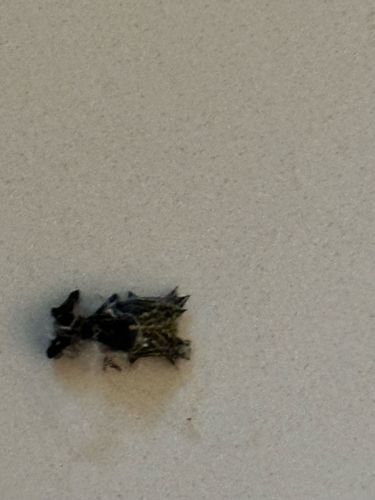Bagworm Moth Larva (specifically, likely a Lichen Bagworm or similar species based on the case construction)
Scientific Name: Various species within the family Psychidae, depending on geographic location and specific morphology of the larval case. A common genus that makes cases with detritus is Dahlica or Psyche.
Order & Family: Order: Lepidoptera, Family: Psychidae (Bagworm Moths)
Size: Larval case: typically 5-20 mm in length, varying by species and stage of development. Adult moths are generally small, with wingspans ranging from 10-30 mm.

Natural Habitat
Found in various habitats where lichens, moss, or suitable plant material are abundant, including forests, woodlands, rocky areas, and even urban environments on trees, rocks, and walls. The larval case provides camouflage, blending them into their surroundings.
Diet & Feeding
Larvae are herbivorous, feeding on lichens, moss, algae, and sometimes detritus or plant material. The specific diet varies by species.
Behavior Patterns
Larvae construct a portable case from silk and debris (such as pieces of moss, lichen, or detritus) for protection. They drag this case with them as they move and feed. They pupate inside this case. Adults are small moths, often nocturnal, and typically have reduced mouthparts, meaning they may not feed as adults. The larvae are the primary feeding stage.
Risks & Benefits
Generally, bagworm larvae are not considered a significant pest unless they occur in very high numbers on ornamental plants, where their feeding might cause defoliation. However, many species feed on lichens and mosses, which typically do not harm trees. They play a role in the decomposition of organic matter in some ecosystems. They are not harmful to humans.
Identified on: 8/11/2025